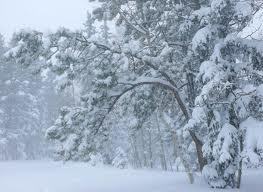
No aspect of the Earth System affects everybody everyday more than does weather, and changes in global climate pose some of the greatest challenges to people and societies in this century. This workshop will offer opportunities to begin development of examples of new, NGSS-based approaches to teaching these topics in middle and high school courses. Workshop sessions will be based at the Lamont Campus of Columbia University in Palisades, NY. Special talks with LDEO scientists will give insights into cutting-edge research about key problems in these topics. Visit to the American Museum of Natural History will highlight the role of informal science education in learning. Participants receive a 1-year membership in NESTA (National Earth Science Teachers Association.) This institute is a component of the Earth2Class Workshops for Teachers.
OFFERED IN CONJUNCTION WITH ST. THOMAS AQUINAS COLLEGE
GRADUATE EDUCATION COURSE GED 7212
Participants will:
-
Review important NGSS and PS/ES disciplinary core concepts pertinent to teaching about weather and climate in middle and high school Earth Science courses
-
Examine selected cutting-edge research about these topics as examples for integrating science, technology, and engineering, and understanding cross-cutting relationships and the Nature of Science.
-
Assess selected examples of existing lesson plans and develop additional plans for their own classes.
-
Participate in field-based, informal science experiences to expand their own classroom resources.
-
Deepen their understanding of the role of informal science education experiences within formal curricula.
ONLINE-ONLY COURSE FORMAT
Participants will complete the Course Assignments and send responses as email attachments to Dr. Passow for feedback and comments. They may use locally-available resources in place of field experiences included in the on-campus format. Assignments may be completed in any order. Participants need also to indicate the number of hours needed to complete the assignments to document they have met the STAC contact-hours requirement.
ON-CAMPUS SUMMER COURSE FORMAT
Instruction will incorporate seminar-, web-, and field-based formats, including visits to laboratories and other assets on the campus of the Lamont-Doherty Earth Observatory.
MEET IN THE LDEO BOREHOLE BUILDING 9 am – 4:30 pm.
Day 1 Introduction to the course 
Completion of applicable registration forms
Overview of pertinent NGSS and State Science Standards
Exploration of selected lesson plans, activities, and assessments
Day 2 Review/reflection about previous day’s concepts
Teaching Weather and Climate: Key Concepts, Resources, Assessment
Visits to selected LDEO research labs
Day 3 Review/reflection about previous day’s concepts
Using Art to Teacher about Weather and Climate
Developing effective lesson plans and hands-on experiences
Planning for submission of course projects
Day 4 Review/reflection about previous day’s concepts
Visit to the American Museum of Nature History “Hall of Planet Earth”
Effective use of informal science education experiences
 Day 5 Exploring spatial thinking in Regents ES W & C questions. Further exploration of additional NOAA, NASA, NCAR, AMS DataStreme and other online resources.
Day 5 Exploring spatial thinking in Regents ES W & C questions. Further exploration of additional NOAA, NASA, NCAR, AMS DataStreme and other online resources.
ST. THOMAS AQUINAS COLLEGE POLICIES




